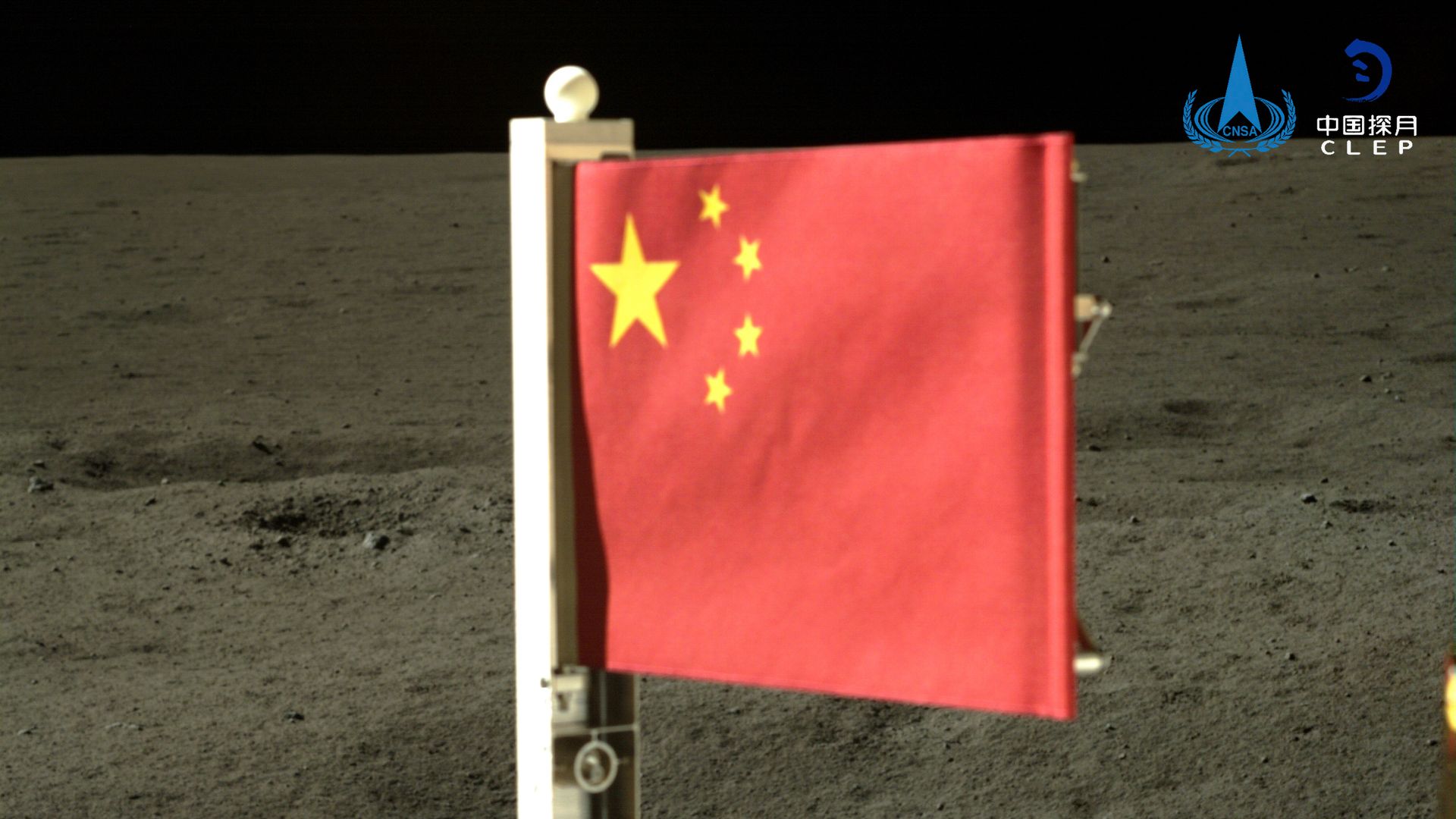China’s lunar probe has returned to Earth, touching down in the northern Chinese region of Inner Mongolia, making the country the first to bring back samples from the moon’s far side.
The re-entry capsule of the Chang’e probe landed at about 2pm Beijing time (7am UK time), carrying lunar soil collected earlier in the month.
At the start of the month, the probe had successfully landed on the moon’s South Pole, in the Aitken Basin, a gigantic impact crater that always faces away from Earth.
Please use Chrome browser for a more accessible video player
Chinese scientists anticipate the returned samples will include 2.5-million year old volcanic rock and other material that scientists hope will answer questions about geographic differences on the moon’s two sides.
The samples will be transferred by air to Beijing, state media outlet CCTV reported, and analysed by both Chinese and foreign scientists.
Chinese President Xi Jinping said the mission’s completion was a “landmark achievement” in China’s quest to become a space and scientific powerhouse.
The near side is what is seen from Earth, and the far side faces outer space.
Filipino soldiers fight off ‘armed’ Chinese coastguard with ‘bare hands’ in disputed South China Sea
Putin’s trip to North Korea underscores relationship – but China will be watching
Beef bans lifted – and new pandas promised – as China and Australia repair fractious relationship
Read more:
Why the moon’s south pole is the chequered flag of space race 2.0
Moon to get its own time zone created by NASA
Missions to the moon’s far side are more difficult because a relay satellite is required to maintain communications.
The far side is also known to have mountains and impact craters, contrasting with the relatively flat expanses visible on the near side.
The probe left earth on 3 May to collect samples which are expected to answer “one of the most fundamental scientific questions in lunar science research,” Zongyu Yue, a geologist at the Chinese Academy of Sciences, said.
“What geologic activity is responsible for the differences between the two sides?”
China’s Xinhua News Agency previously said the landing site of Chang’e was the South Pole-Aitken Basin – an impact crater eight miles deep and 1,500 miles wide – which is thought to have been created more than four billion years ago.
Keep up with all the latest news from the UK and around the world by following Sky News
Be the first to get Breaking News
Install the Sky News app for free
It is the oldest and largest such crater on the moon, so could provide significant information because the original impact may have ejected materials from deep below its surface.
The mission comes amid a growing space rivalry among countries including China, India, Japan and the US.
Beijing aims to put a person on the moon by 2030, while US agency NASA hopes to achieve the feat again in September 2026.
This breaking news story is being updated and more details will be published shortly.
Please refresh the page for the fullest version.
You can receive Breaking News alerts on a smartphone or tablet via the Sky News App. You can also follow @SkyNews on X or subscribe to our YouTube channel to keep up with the latest news.






















